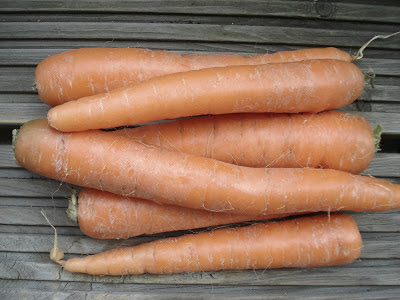From Root to Stem
This article from the New York Times got me thinking about gazpacho. A few weeks back, I spotted a book that was all about gazpacho. And just about every restaurant I walk past features a version of the ubiquitous soup on their menu. Gazpacho.
I've been mulling the subject over in my mind for a while now, but the right words just wouldn't come to me. How does one wax poetical about something that seems so foreign to so many people? Food magazines and shows love to talk about scrumptious cold soups to alleviate the heaviness of a summer heat wave, but most diners seem to eye chilled bowls with suspicion.
I think Fran Leibowitz had it right when she said that "cold soup is a very tricky thing and it is the rare hostess who can carry it off. More often than not the dinner guest is left with the impression that had he only come a little earlier, he could have gotten it while it was still hot."
And yet, gazpacho is the perfect medium for abundant summer harvests. While most of us may have the traditional combination of tomatoes, peppers, cucumbers and garlic seared into our minds and taste buds, just about anything goes nowadays. In the introduction to the book on gazpacho, I found the most apt phrase to describe this Andalusian soup: "Gazpacho is the perfect way to make any vegetable disappear." Perhaps Andalusian grandmothers wouldn't recognize their traditional soup in our creations, but if it can be eaten raw, it can go into the soup.
The classical recipe calls for extracting the vegetal waters by means of a food mill or a mortar and pestle, and then thickening the thin juice with stale bread, but if you own a blender, you can churn out dinner in a matter of minutes. You won't even need the stale bread, since the vegetables' pulp will render a thick enough liquor.
You can also use up all those odds and ends of vegetables that usually go in the garbage or compost bins, such as the peels, the stems, and the leaves of non-leafy foods. The colour of the resulting soup may end up a little muddied, but the flavour will be more robust. Blenders that are powerful enough to crush ice are usually strong enough to reduce any vegetable into a smooth soup, however, if yours is an older model (or if you, like myself, only have a stick blender), you can always sieve the soup to make it smoother.
I truly believe that a bevvy of delicious, cold soups can be created from whatever is in your refrigerator right now, so I will only give you a basic recipe as a guideline. The rest is up to you. For each cupful of chopped vegetables, add a generous pinch of salt; a half to full teaspoon of a flavourful vinegar; and a generous splash of olive or other robust oil. Reduce to a purée in the blender, adding ice or cold water as needed.
If you are really stumped for ideas, here are a few suggestions:
Classic Red - Tomatoes; red, yellow or orange peppers; cucumbers, peeled and seeded; and garlic.
Green - Cucumber; zucchini or other summer squash; kale or other green; garlic and scallions.
Salad - Lettuce; roquette; avocado; cucumber; tomato; lemon juice and zest; garlic.
Fruity - Tomatoes; watermelon; pineapple; mint.
Health Booster - Broccoli; kale; cucumber; apple; mint; sunflower seeds.
Now go forth, and empty your refrigerator!
Bon app'!





so tasty look like its shedevr. author pls check this link, hope you will find here отдых в Черногории lot of itnteresting information.
ReplyDelete